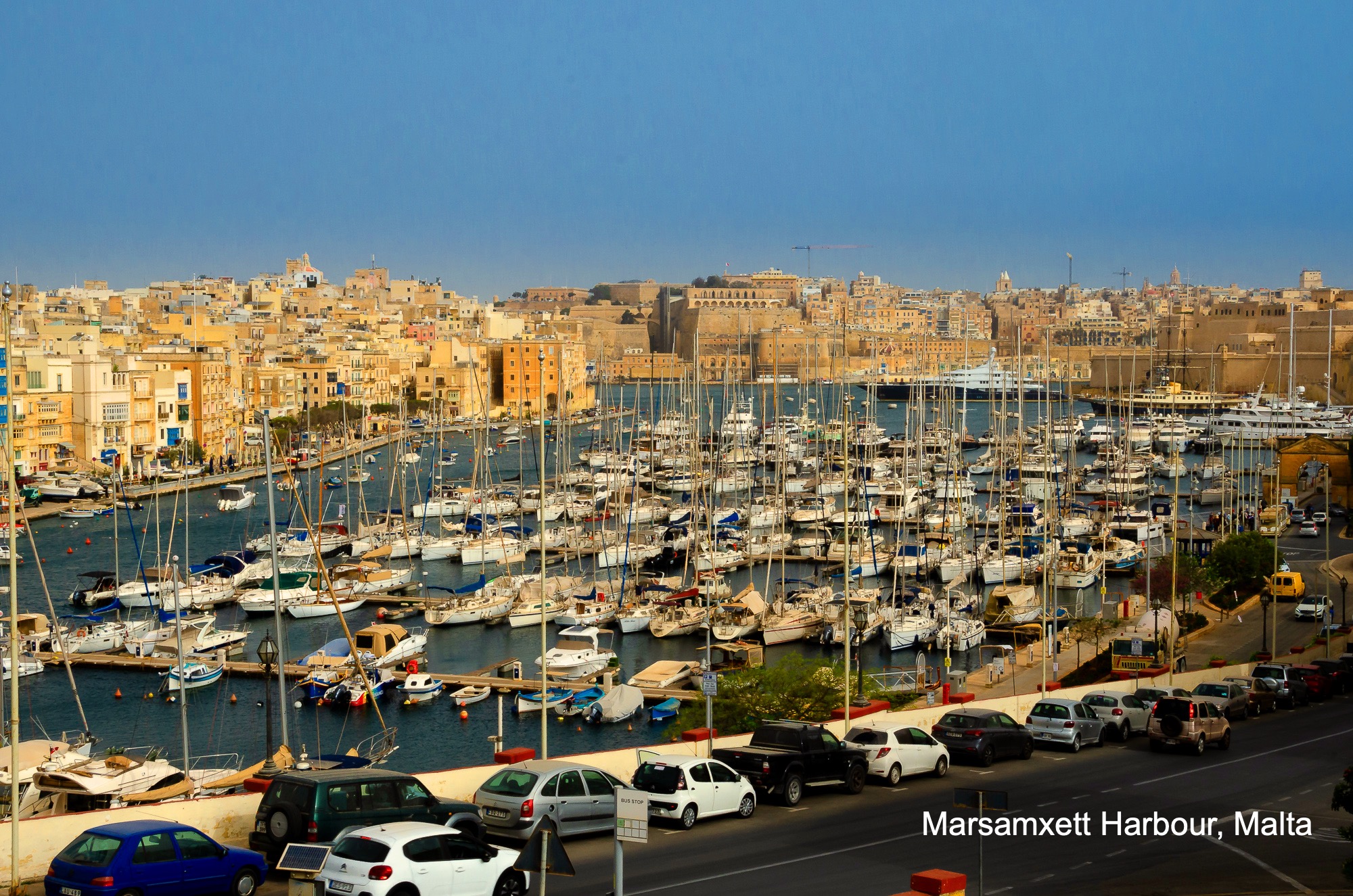To have a good understanding of European history including relations with the Maghreb, Middle East and the Ottoman Empire, one must be familiar with Malta. It’s a diminutive archipelago in the Mediterranean that has been inhabited for 8,000 years. It has been ruled by many, including the Phoenicians, Romans, Greeks, Arabs, Normans, French, and British. It’s the home of the Knight Hospitallers which initially provided charitable medical services in the Holy Land and expanded into a military order. Malta’s heroic efforts in 1565 withstood the Ottoman siege and stopped their conquests from going further westward in Europe. It was a critical launching point of the Allied invasion of Italy in 1943.
When walking through the medieval streets of Malta’s cities, you are surrounded by history but also excellent restaurants, spirited nightlife and 300 days of sunshine. Outside of the densely populated cities are beaches, diving spots and day hikes. The island is so full of medieval architecture and natural beauty, Game of Thrones filmed in many locations there.
Where is Malta and How to Get There?
Malta is between Sicily and Tunisia. The ferry from Valletta to Pozzallo, Sicily travels 105 kilometers / 55 nautical miles / 65 miles with a crossing time of approximately 1 hour and 45 minutes.
Malta is 300 km / 155 nm / 180 mi from Tunisia. To go from Valletta to Tunisia also entails taking a train and bus and takes up to 24 hours. This was too much for us when we went to Tunisia afterwards. We found it easier to fly even though we had a stop-over in Istanbul.

There are about 200 airports that have direct flights to Valletta, but none in the U.S. or Canada.
Why We Went to Malta
My wife Khadija and I had recently joined the Travelers’ Century Club (TCC) and decided to attend the biennial International Meeting in May 2022. TCC is a social club for people who have visited 100 or more of the world’s countries and territories. At the meeting, we met many other world travelers and made many friends, some we subsequently have met around the world. Here are a few of the TCC folks on Gozo Island.
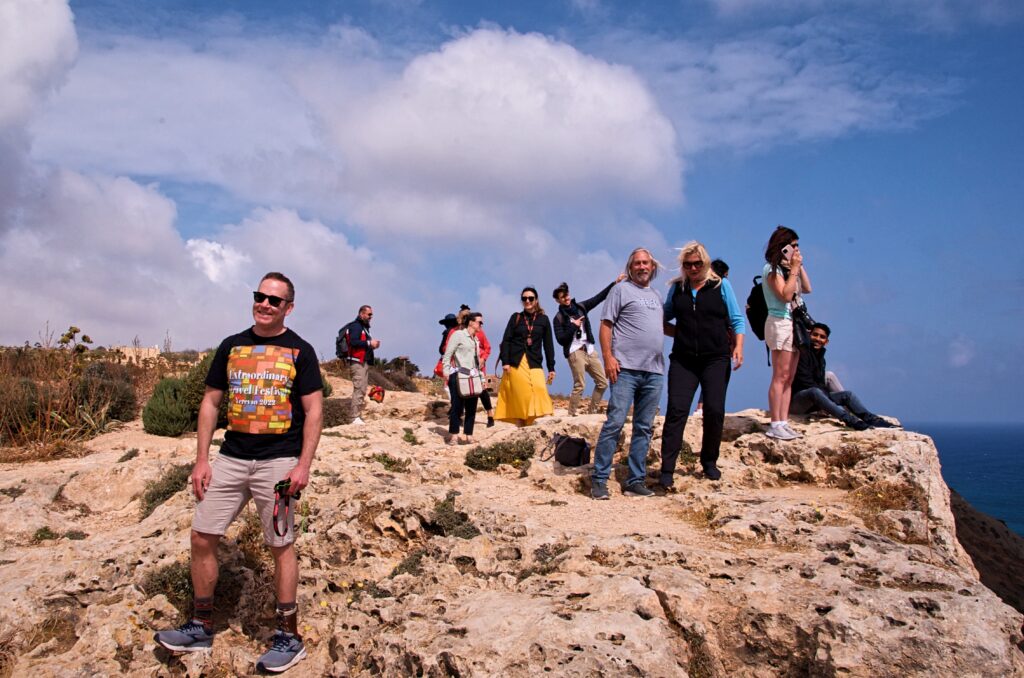
TCC expertly organized all of our main activities, including this marching band.
We stayed four days for TCC activities plus an extra day on our own. One of the TCC days was an all-day meeting of travelers relating their incredible journeys, which was fascinating but not an opportunity to visit Malta. So, we really only had four days. This was definitely not enough and we should’ve spent at least a full week with five days in the Island of Malta and two in Gozo.
Is Malta Safe?
Malta is safe throughout the country. Here, as everywhere you travel, employ basic safety precautions and use common sense to avoid problems, such as watching your possessions late at night in a club.
Is Malta Expensive?
Malta is a moderately expensive European country to visit and noticeably cheaper than the main European tourist destinations of London and Paris.
Where to Stay in Malta
There are all levels of hotels which you can book to meet your budget. The conference was in the Marriott by Balluta Bay and we stayed there for convenience and comfort for $221/night.
How to Get Around Malta
Malta has three islands which are inhabited and another three which are not. The biggest one is also named Malta, next is Gozo and by far the smallest is Comino. In these three specks in the ocean are a surprising number of attractions.
The country has a population of about a half million and is one of the most densely populated in the world.
Here’s a map of some attractions in the Island of Malta:
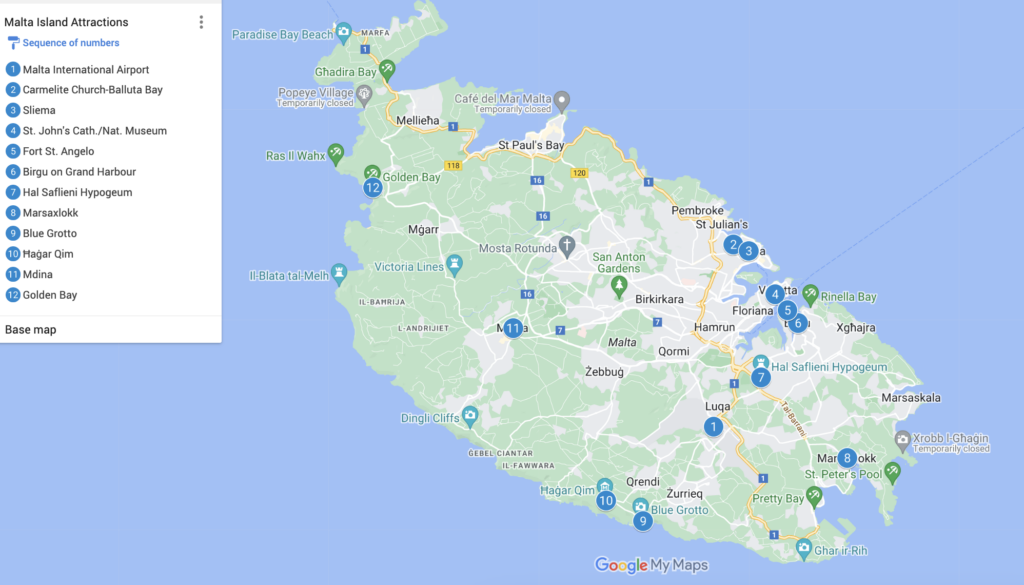
Here’s one for Gozo Island.
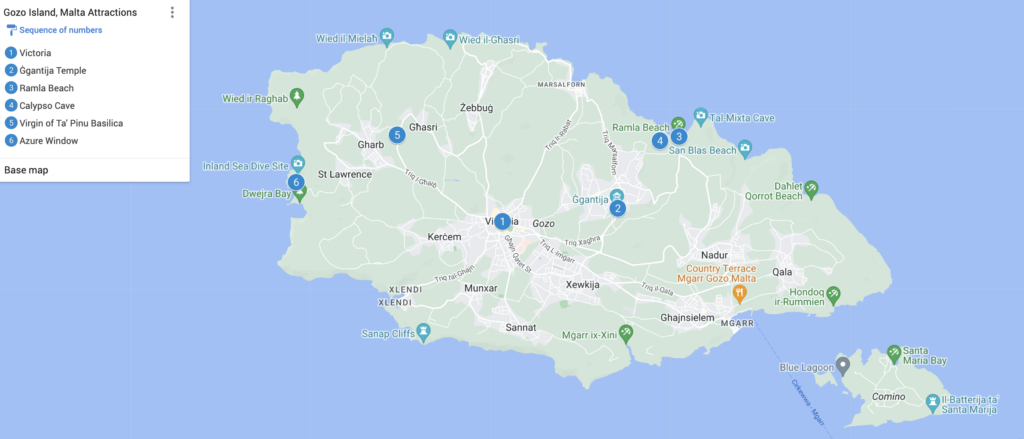
There is a public bus service in Malta and Gozo, but we didn’t take them as car services (Ryde is the main app, Uber isn’t here) were inexpensive and most of our travel was in a tour bus. Taxi to the airport was $20 and relatively short local rides were less than a quarter of that.
If we’d been on our own, we would’ve rented a car for a day (they drive on the left like the UK) to see the country outside of the cities.
You can only reach Gozo by ferry or private boat. Construction of a tunnel between Malta and Gozo is currently being discussed and tests conducted by the University of Malta are underway to test the effect of seismic activity.
Where to Eat in Malta
Malta has a wide variety of cafes and restaurants. One we particularly liked was Paranga in the InterContinental Hotel on St. George’s Bay. It served modern Italian fare with delicious, fresh seafood.

What Languages to Use in Malta
Maltese is the only Semitic language spoken in Europe. The language took hold in the 11th century when settlers from Sicily arrived with their dialect of Arabic, eventually replacing the Arabic spoken by the former rulers, Fatimid Caliphate, an Ismaili Shi’a caliphate spanning a large area of North Africa. Genetically, Maltese have mostly common ancestry with Sicilians and Calabrians, with little from North Africa and the Middle East.
Starting with the Norman invasion of Malta and the subsequent re-Christianization of the islands, Maltese Arabic gradually became more latinized. Half of the Maltese vocabulary is derived from Italian / Sicilian, a third from the original Arabic (especially basic words) and the rest from other languages, particularly English.
The grammar is a combination of Semitic, Romance and English forms. The letters are mostly Roman, many with stress marks. There are a few unusual ones, representing sounds not found in English, such as Ħ. The Arabic influence may be most noticeable in the names of the cities. For example, Mdina is basically the same name as Medina in Saudi Arabia.
Tourists don’t have to know Maltese, as 90% of the population speaks English which is also the written form of legal documents.
Island of Malta
Malta is the largest of the three inhabited islands of the archipelago. It is sometimes referred to as Valletta, the name of the country’s capital, to distinguish the main island from the entire country. The roughly oval island is only 245 square km / 95 sq mi, a little smaller than Queens in New York City.
The Hypogeum and Tarxien Temples
The underground structure, dating back to 3300 BC, was a sanctuary and burial place with the remains of more than 7,000 people. The site was likely used as early as 4000 BC and until 2500 BC. Made out of limestone, the maze-like system of caves on three levels was built with various natural light shafts that bring sunlight down to even the lowest levels. You must book weeks ahead of time for a tour (individual viewing is not allowed).
There’s a strict no-photo policy inside the Hypogeum. Cameras, including cell phones, must stay in the lockers outside. There are plenty of photos online to get an idea. Here’s a photo of the unassuming entrance with Khadija and TCC members: Bill on top and (going right) Cathy, Amy and Dan.
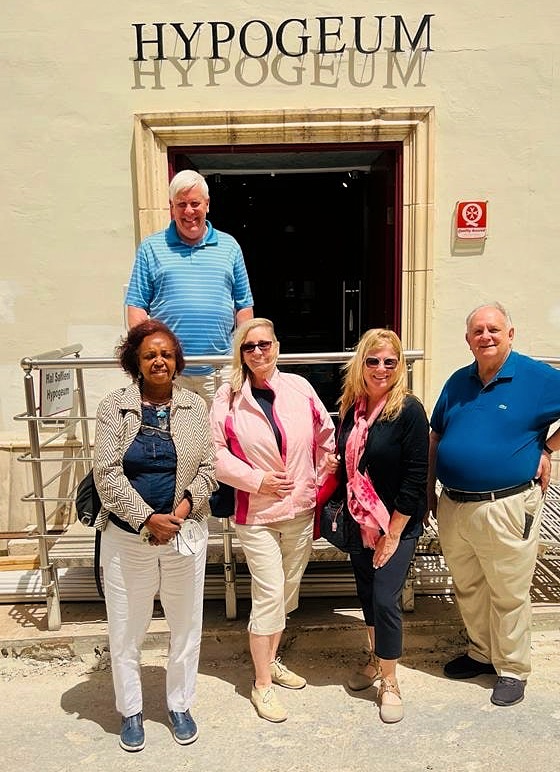
Hypogeum, meaning underground in Greek, was discovered by accident in 1902 and underwent preliminary excavation in 1903 by Maltese ethnographer and archeologist, Emmanuel Magri. Magri started excavation of the site in 1903 but, without proper documentation, his findings were lost when he died in 1907. Afterwards the excavations resumed under another Maltese archeologist and historian, Themistocles Zammit, who recovered what was left and sent it to the National Museum of Archaeology in Valletta. Today it’s a UNESCO World Heritage Site.
The Tarxien Temples, dating from around 3000 BC, are a short walk from the Hypogeum and worth seeing. There are three attached temples with metal walkways in between and an overhead protective tent.
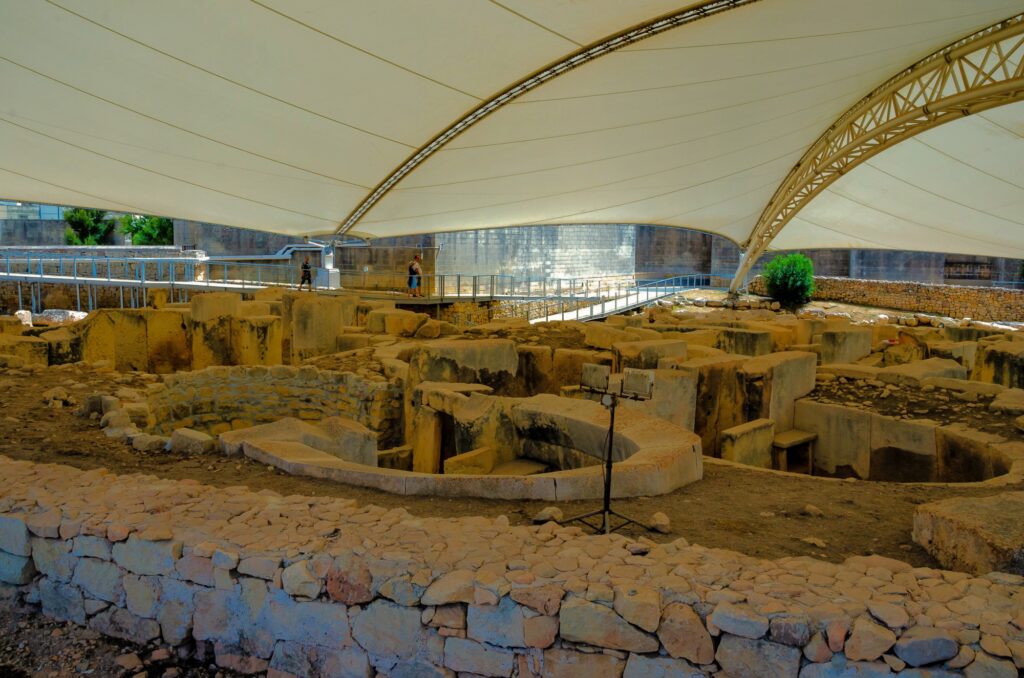
I especially liked the intricate stonework with spiral designs, images of domestic animals and my favorite, the replica of the flat feet and plump legs of a woman. The lady was eight feet high and the original remaining lower part is in the National Museum of Archaeology.
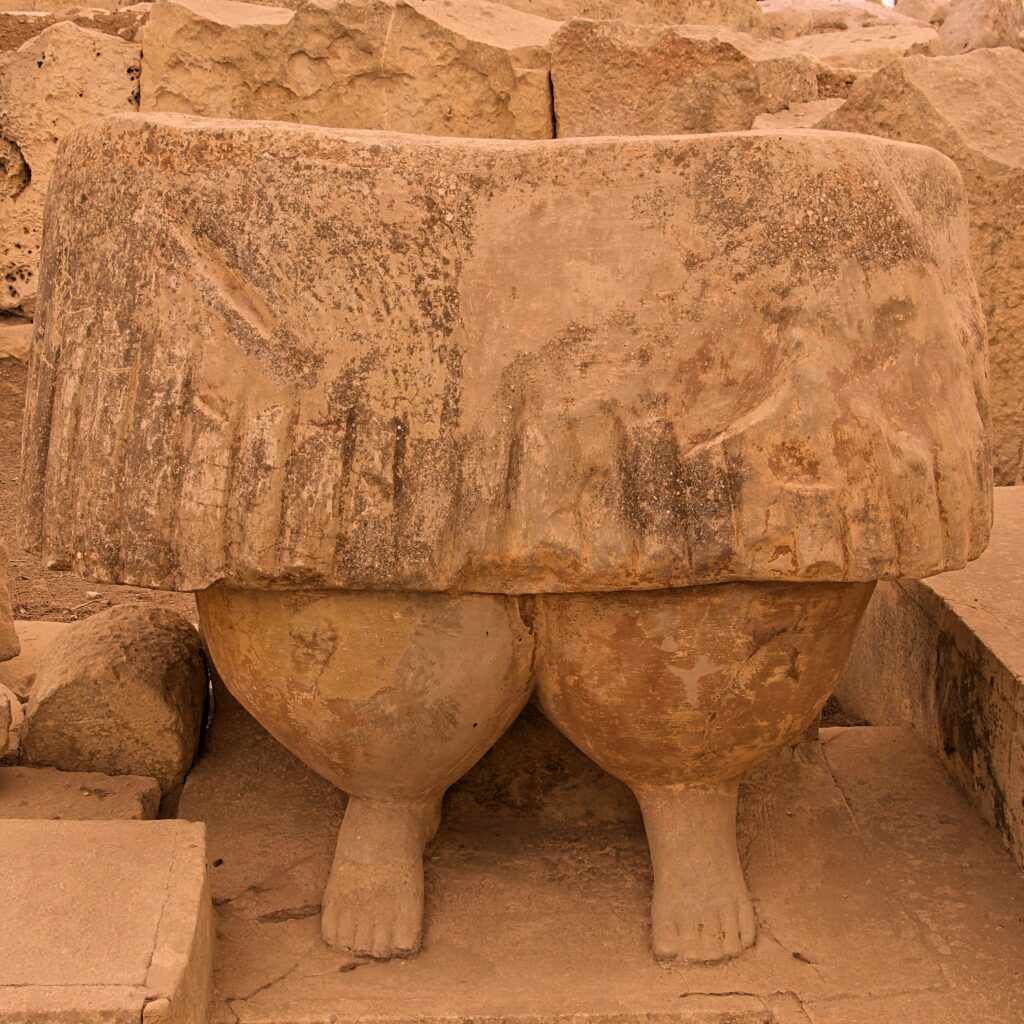
Tarxien is one of seven temples of the Megalithic Temples found throughout the country, collectively a UNESCO World Heritage Site.
While meandering around the streets in this area, I met John who has lived in Malta his whole life and has had various jobs including managing a computer store. His son lives next door on this lovely street of attached houses close to the Hypogeum.
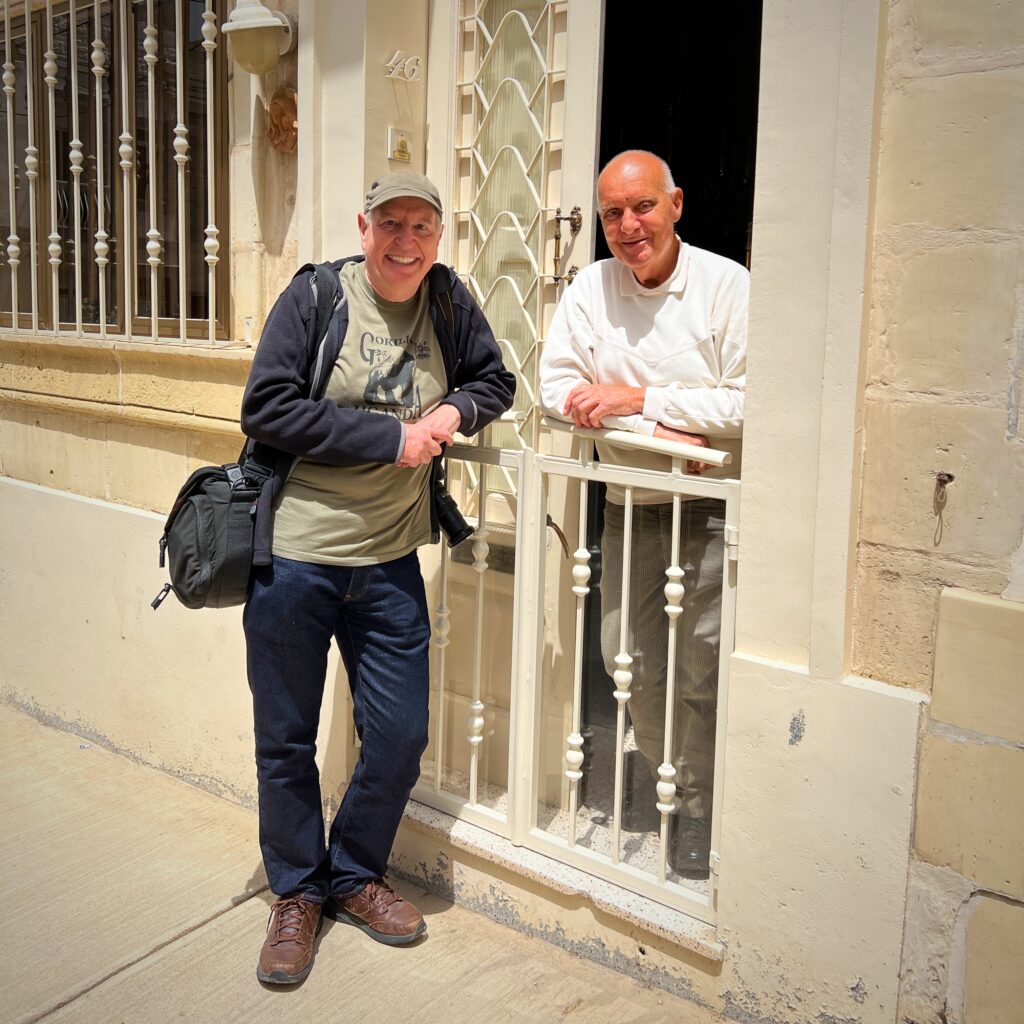
Valletta
Valletta is the tiny capital of the country and a UNESCO World Heritage Site because of its baroque architecture, over 300 monuments, historic palaces, impressive churches and a unique grid plan for the 16th century. This amazing city with a legendary past is located between two magnificent harbors overlooking the Mediterranean Sea and surrounded by massive fortifications. It’s essentially an open-air museum.
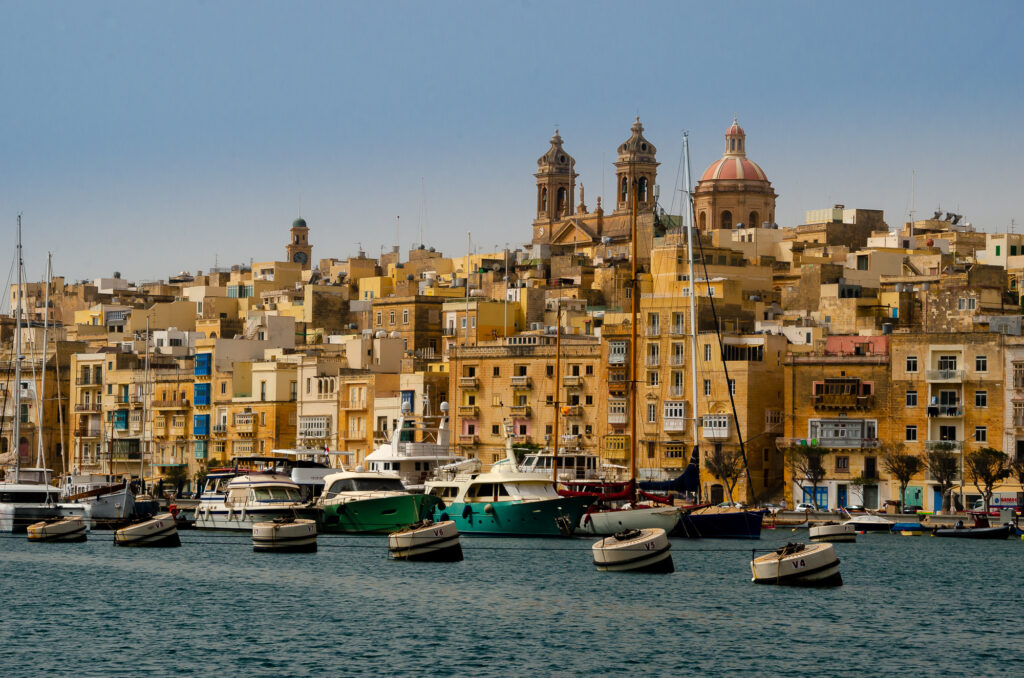
Perhaps the most defining element of Maltese architecture in Valletta and elsewhere is the ornate, enclosed, wooden, windowed balconies. In Maltese, these balconies are called gallarija and most likely were inspired by similar structures from North Africa.

There are two museums which are highly recommended: the National Museum of Archaeology and the MUŻA – Museum of Fine Arts. We tried to go to them but couldn’t work it out between our tour schedule and the museum hours. We’ll have to go first thing when we return.
Birgu (Vittoriosa) and Fort St. Angelo
Birgu is a fortified city across a harbor from Valletta. The city has many historic streets and you feel medieval history everywhere you go.
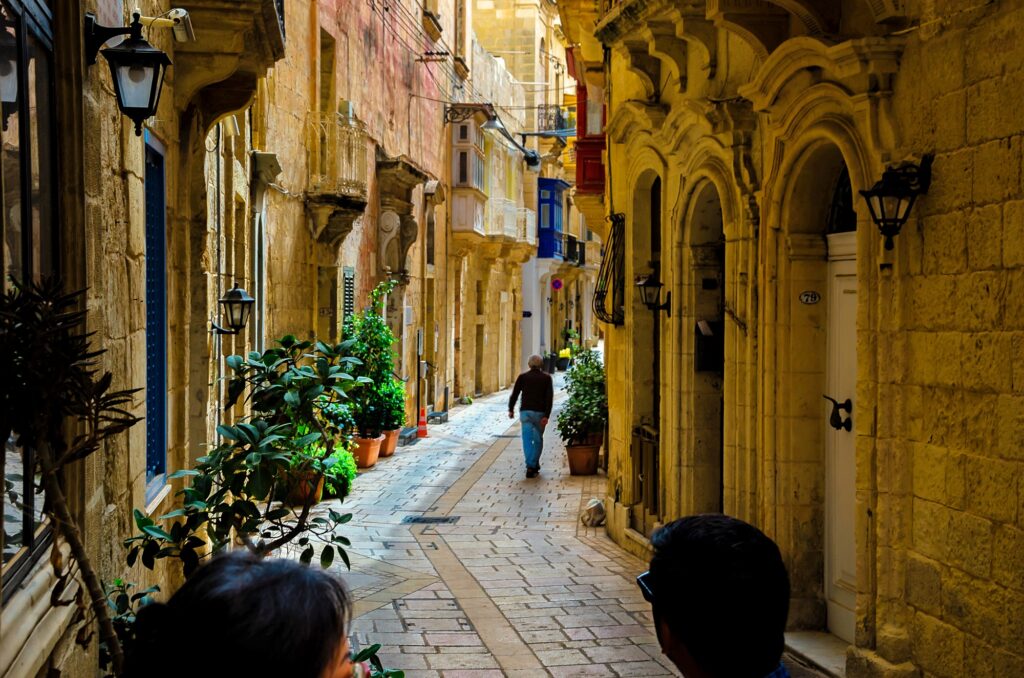
Birgu has incredibly scenic harbors surrounding it. In the Grand Harbour (spelled the English way), we saw a docked 18th century galleon. It turned out it was for a movie starring Joaquin Phoenix and Vanessa Kirby called Kitbag. Directed by Ridley Scott, it’s about Napoleon’s rise to power.
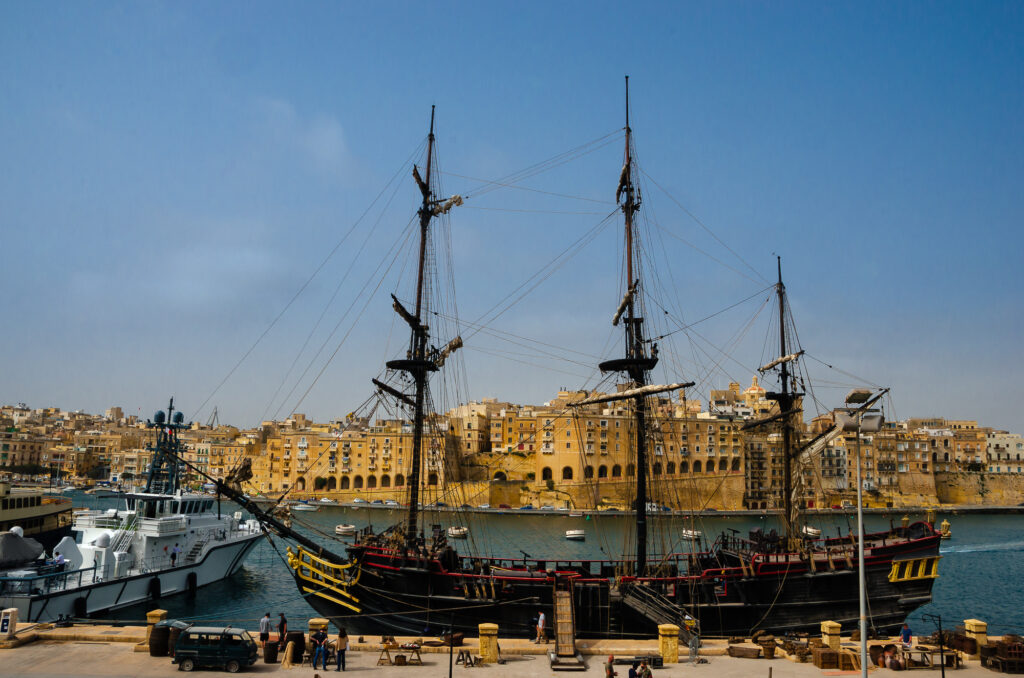
Since Malta has forts, cliffs, beaches, stone buildings and blue seas, it has often been used as a filming location.
Prior to Valletta, Birgu was the capital city of Malta from 1530 to 1571 and is most well-known for its crucial role in the Great Siege of Malta in 1565. The siege lasted for four months when the Ottoman Empire tried to seize control of the island of Malta but was successfully held off by the Catholic military order called The Order of Knights of the Hospital of Saint John of Jerusalem, also known as the Knights Hospitaller. The name stems from the order establishing hospitals in the Holy Land during the crusades. The soldiers came from all over Western Europe.
Today the Order has 13,500 knights worldwide, furthering the their humanitarian work. Birgu’s other name, Vittoriosa, was named for Malta’s victory over the Turks.
Located in the center of Grand Harbour, Fort St. Angelo was originally built as a castle named Castrum Maris (castle by the sea) but was later fortified by the Knights Hospitaller during the Great Siege of Malta. The fort was later used by the British during World War II where it suffered significant damage.
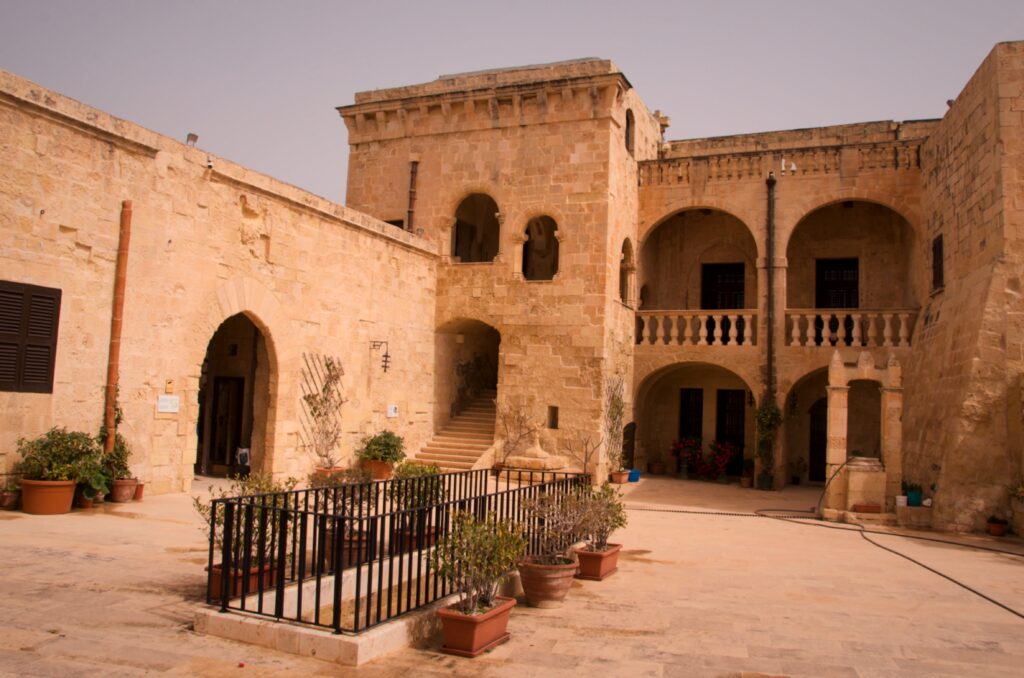
In the Chapel of St. Ann in the Fort, we attended a presentation by John Critien, Professed Knight of the Order of Malta.
There are three classes of knights. John is a member of the First Class, the Knights of Justice or Professed Knights, who have made vows of “poverty, chastity and obedience aspiring to perfection according to the Gospel”. The other two classes do not have as strict of requirements.
In 1532, Pietro Dusina arrived in Malta as its first Inquisitor and Apostolic Delegate of Pope Gregory XIII, to work and live in what is now known as the Inquisitor’s Palace in Birgu. During the Inquisition, the Church conducted trials of those accused of heresy and those convicted were often gruesomely tortured or killed. The Inquisition in Malta was abolished by the French upon their arrival in 1798.
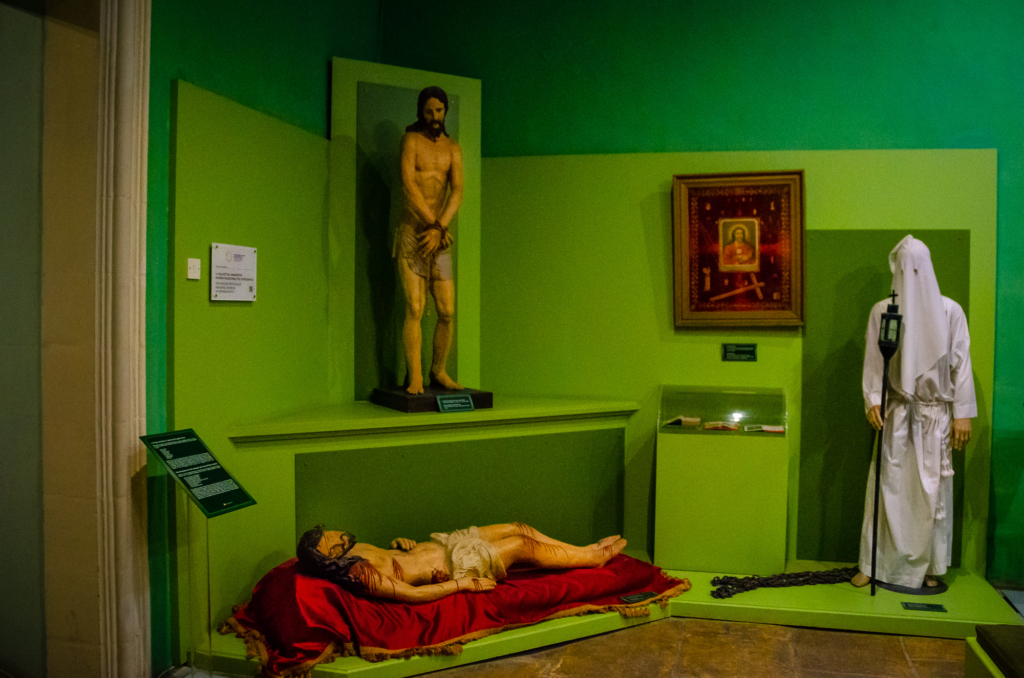
The Palace is not all about barbarism, but also features the imposing architecture and provides portraits of centuries of Church leaders in Malta.
Balluta Bay
On our last day in Malta, we went to Balluta Bay which is located on the northeast coast of the country within the town of St. Julian’s. The bay features the prominent neo-gothic Carmelite Parish Church, which was originally built in 1859 but rebuilt in the mid-20th century by Carmelite friars. Here is Khadija standing in front of the church:
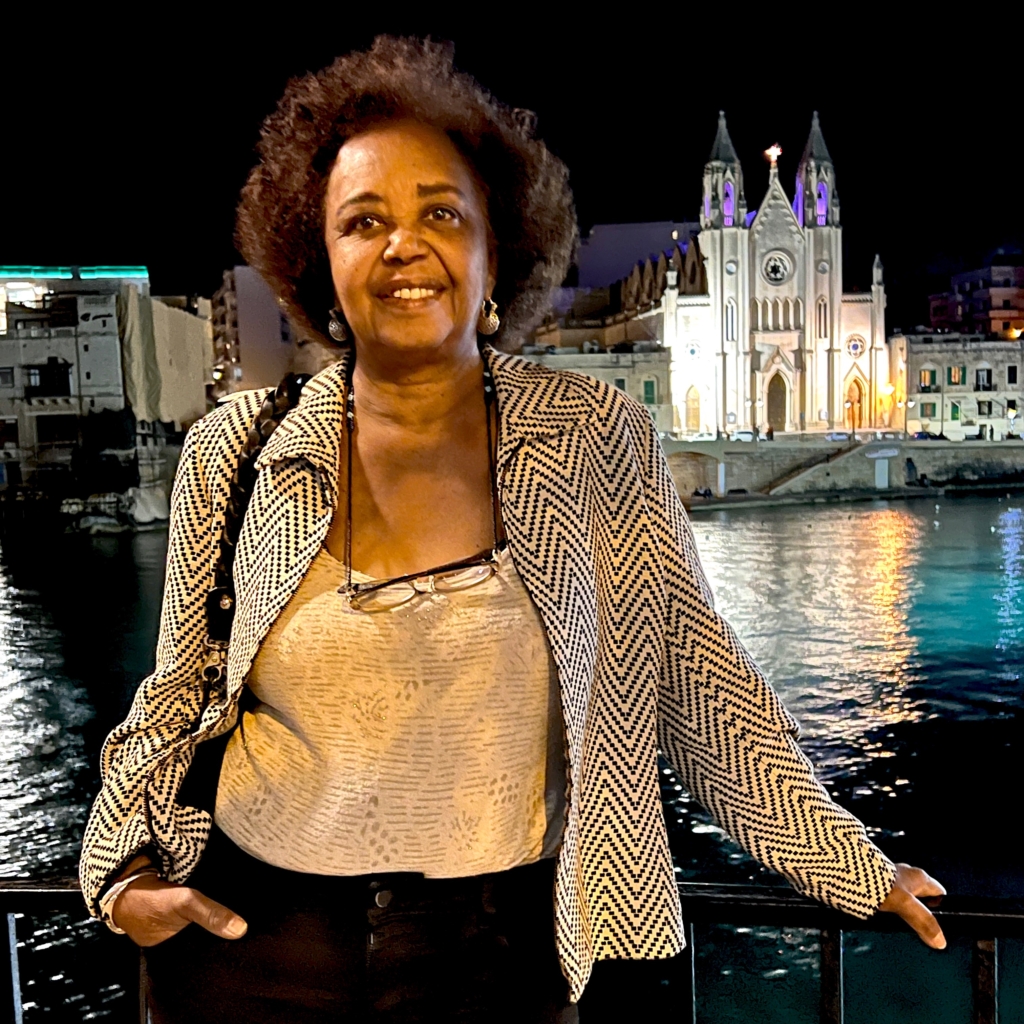
Balluta Bay is very popular with both locals and tourists for its recreational opportunities such as swimming, boating, and other watersports.
Mdina
Also known as Città Vecchia (Old City) and Città Notabile (Notable City), Mdina is a fortified city in the northern region of Malta. Originally founded in the 8th century BC by Phoenicians, it was taken over by the Roman Republic in 218 BC and renamed Melite (derived from the Arabic word medina which was later shortened to Mdina). Mdina was the capital of Malta through the Middle Ages until the arrival of the Knights Hospitaller who changed it to Birgu. After that, Mdina never quite reached the same level of prominence and was given the name the “Silent City”. The walled city was a place of refuge for Malta’s nobility and religious leaders throughout history because of its naturally defensible position.
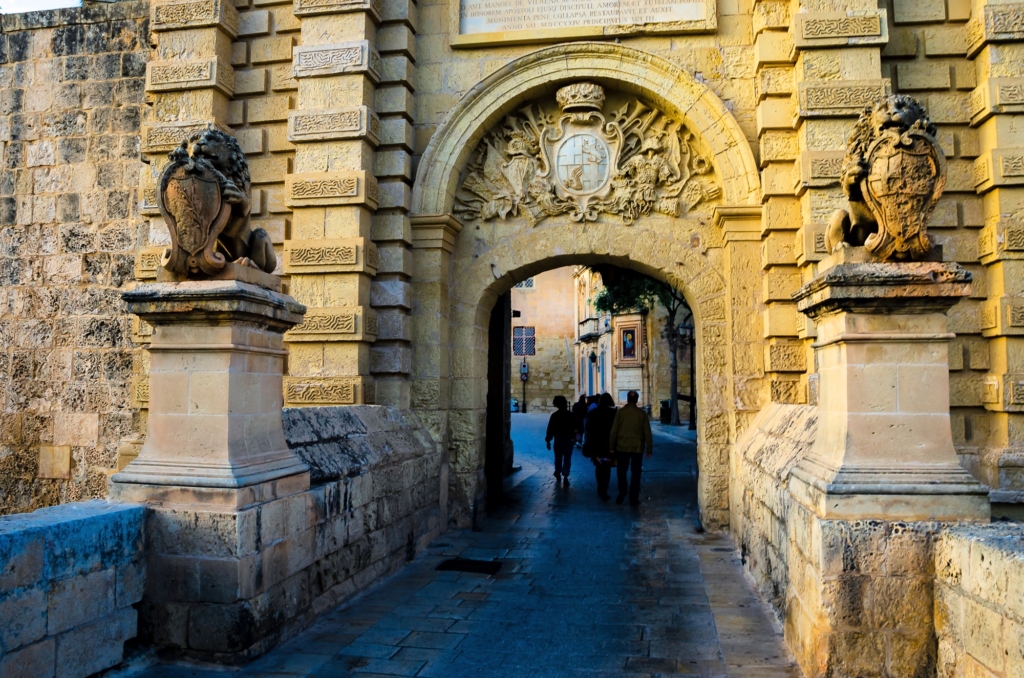
Mdina has an attractive mix of Baroque and Norman architecture made mostly of limestone, but what I liked the most was the view of the farmland from the perimeter walls.
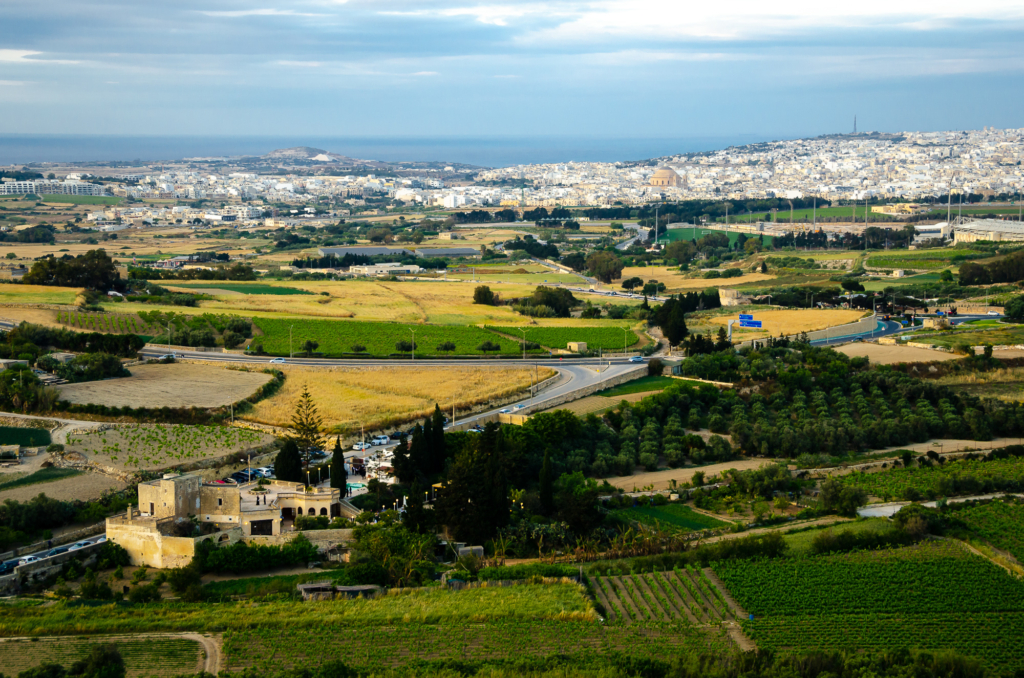
Island of Gozo
Gozo is the second biggest Maltese island and was first settled by farmers coming from Sicily in 5000 BC. Since then, it’s been inhabited by many different peoples over the centuries, as with the rest of the country. It’s not as densely populated as the Island of Malta and has many narrow roads which barely accommodate passing cars.
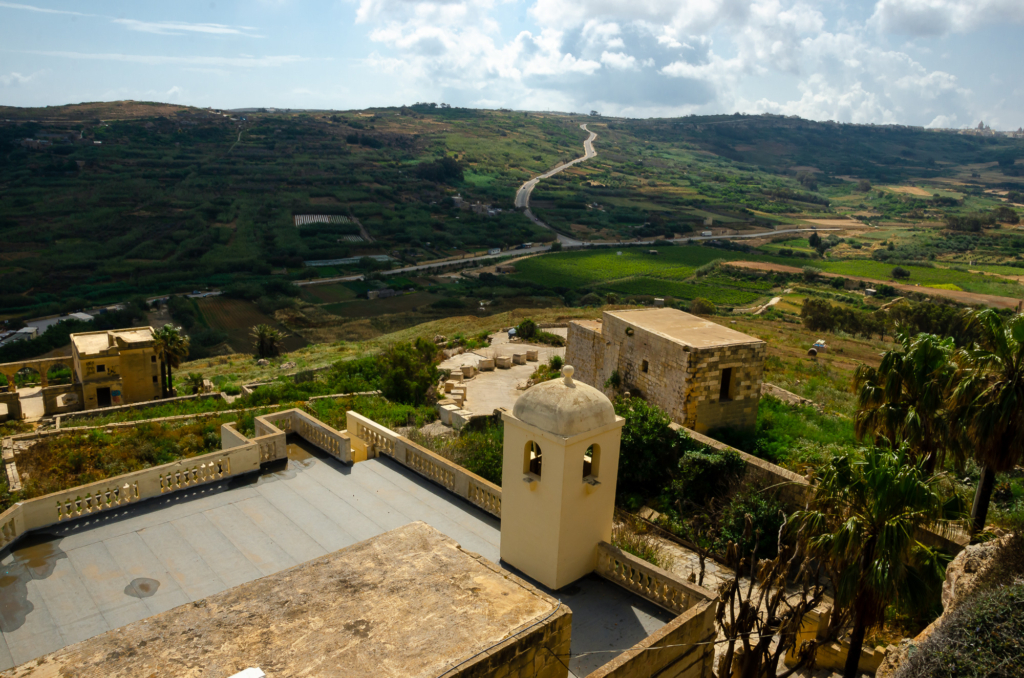
We were there only part of a day, visiting a few of the main sites and weren’t able to properly experience the many crescent beaches, towering cliffs and unusual rock formations. Again, we need to go back.
Ġgantija Temples
The Ġgantija Archaeological Park contains two temples, built side by side and enclosed within a boundary wall. They date from somewhere between 3600 BC and 3200 BC and are considered some of the oldest free-standing and religious structures in the world. These temples are two of the seven temples of the Megalithic Temples, collectively a UNESCO World Heritage Site.
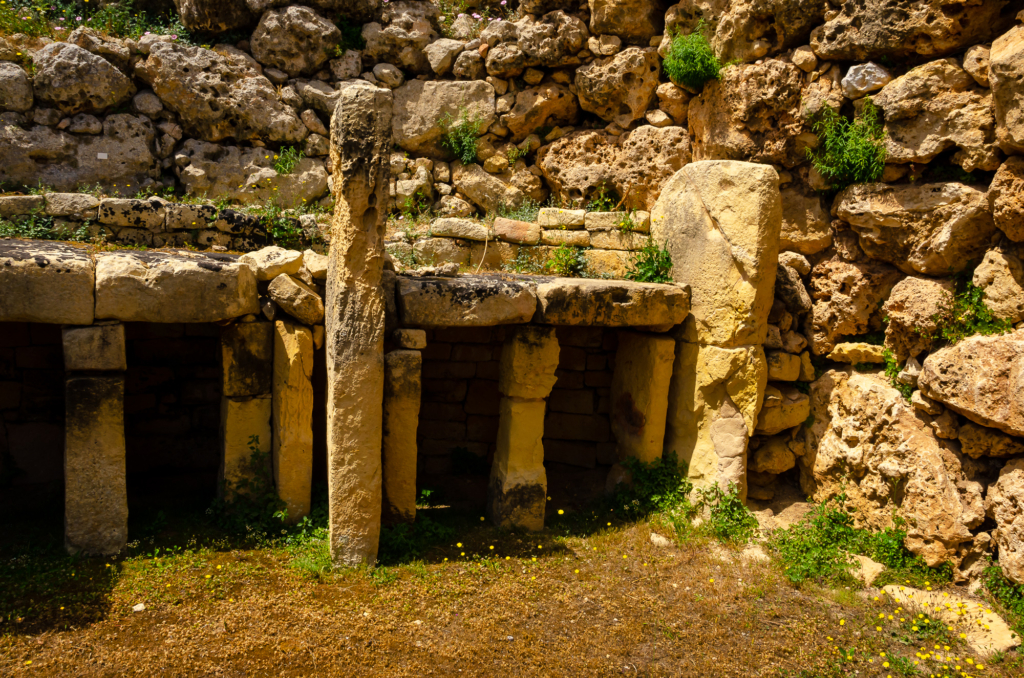
The park has a highly interesting Interpretation Centre with many replicas of the most significant, mostly figurine-size artifacts discovered at various prehistoric sites in Malta. I loved this one with the rotund body, flat face, large nose and plaintive expression.
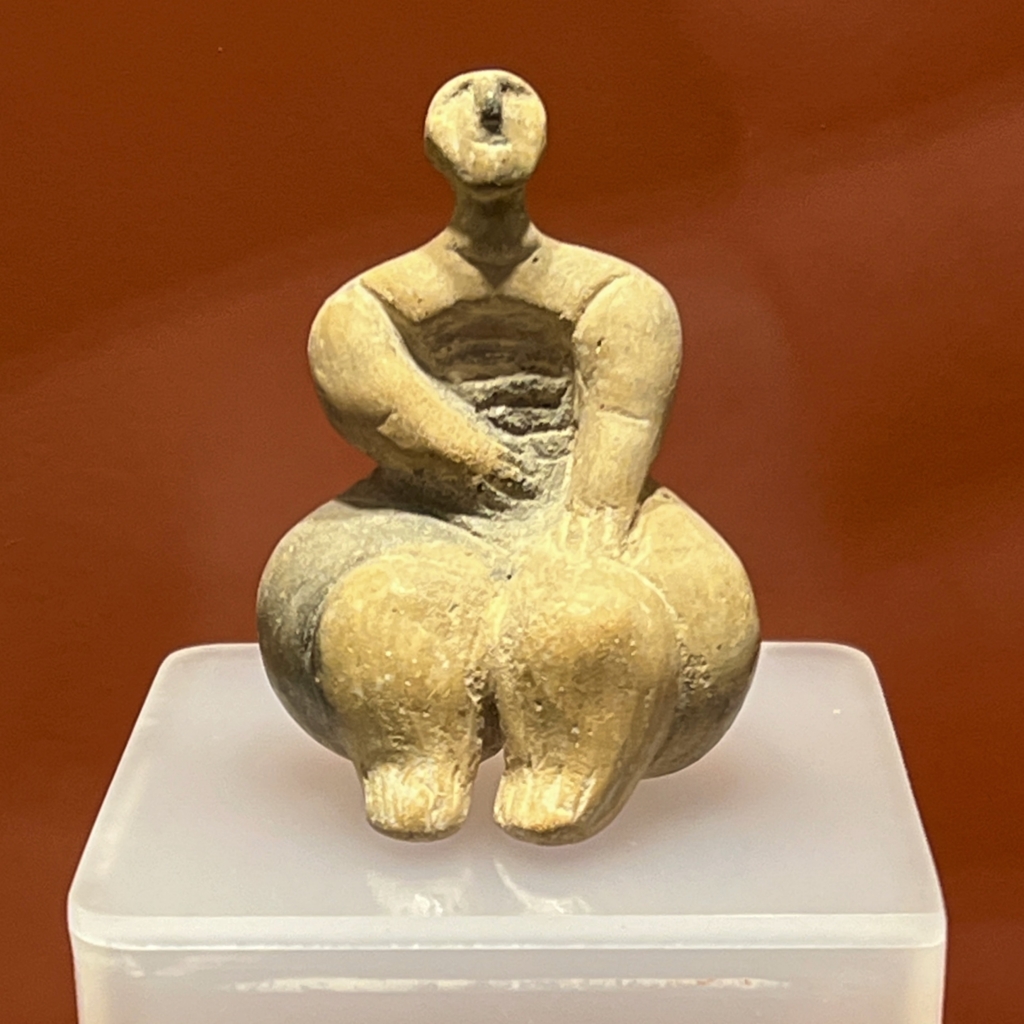
Victoria (Rabat)
Victoria (aka Rabat, the name of the old town center) is the main town in Gozo, situated on a hill. This area has been settled since Neolithic times. The British government changed the official name to Victoria in 1887 on the occasion of Queen Victoria’s Golden Jubilee. Locals still call it Rabat or Rabat Gozo to distinguish it from the town of Rabat on the Island of Malta .
While small with a population of about 7,000, it’s a charming place to poke around for a few hours, taking a break for ice cream or a drink at the many outdoor cafes.
The center area had a particular concentration of Catholic statues in niches on the street (these are common throughout Malta).
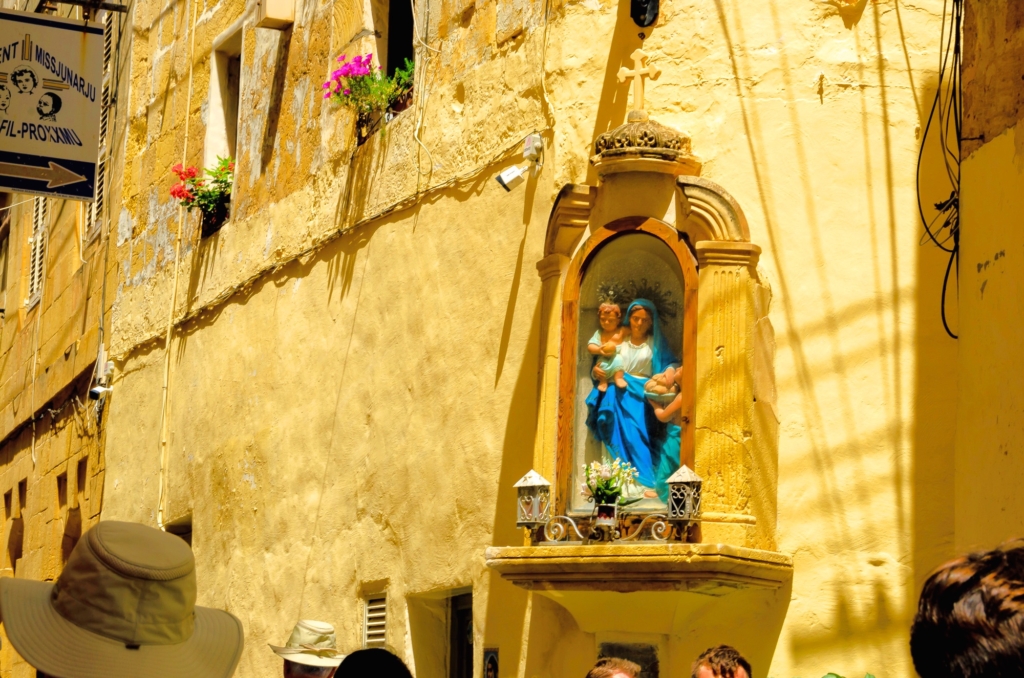
In the middle of the town is the Citadel with fairly complete walls. The structure you see today dates back as far as the early 1600s, though the area was inhabited long before then. If you climb to the top, there’s a far reaching view. I didn’t do it because I lost my cell and spent most of my time looking for it. Eventually I discovered I left it on the bus.
Calypso’s Cave
It’s possible that Gozo was the model for the island of Ogygia, home of Calypso, where she kept Ulysses prisoner for seven years in Homer’s “The Odyssey.”
Calypso’s Cave is a natural cave, located in the Ramla Bay and is currently closed to the public because the walls are unstable. You can see the bay from a nearby scenic overlook.
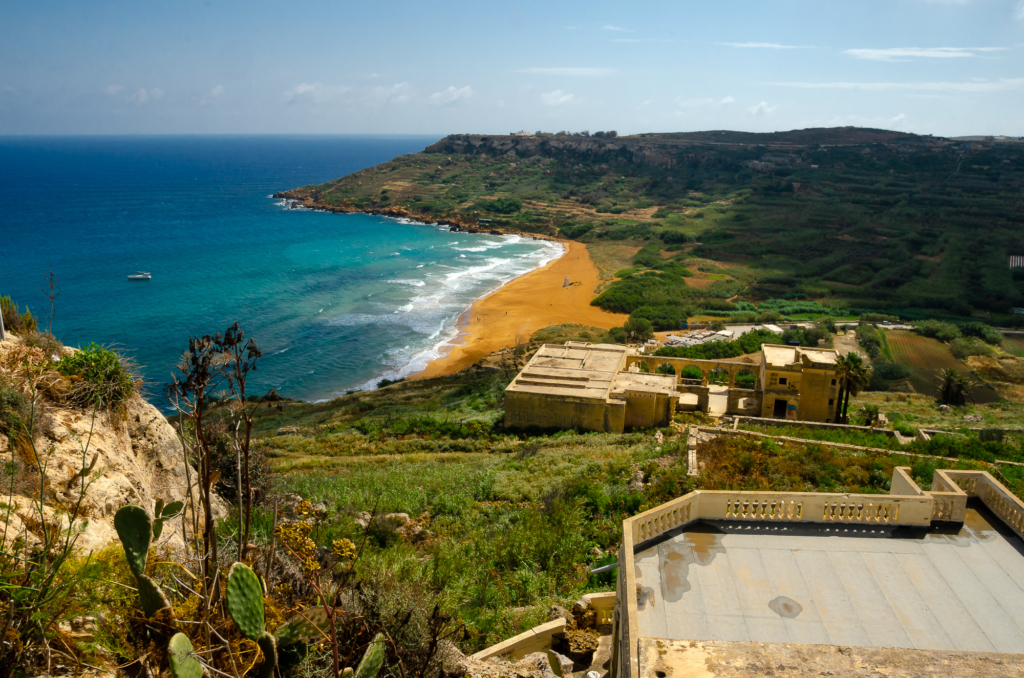
Saint John the Baptist (Rotunda) Church
This is the biggest church in Gozo and boasts the third largest unsupported dome in the world. From a distance, it dominates the landscape.
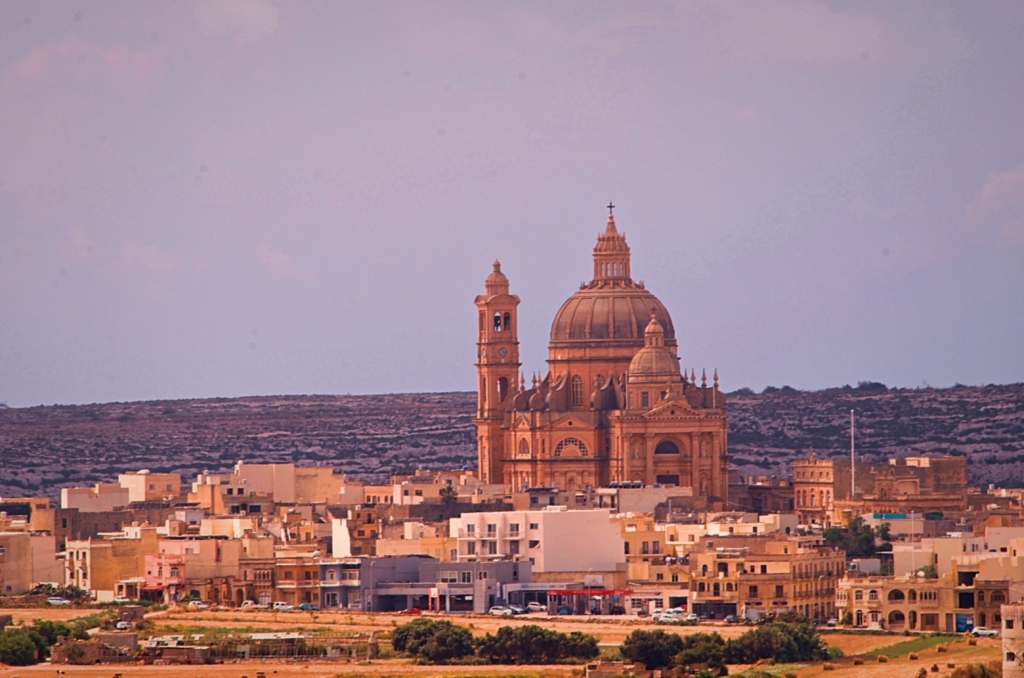
Construction started in 1951 to replace the old church of St. John. After 20 years, it was completed which is warp speed for large church construction. In 1978, on the 300th anniversary of the parish, the Bishop of Gozo consecrated what is now called The Rotunda.
Final Thoughts
Because most of our schedule was set by the TCC, I didn’t research Malta much before we arrived and I knew very little about it. Though there were two things in the recesses of my mind.
First, the plot of the film noir movie Maltese Falcon (starring Humphrey Bogart and Peter Lowery, based on the novel by Dashiell Hammett) revolves around a statue of a falcon from Malta. The introductory text reads:
“In 1539 the Knight Templars of Malta, paid tribute to Charles V of Spain, by sending him a Golden Falcon encrusted from beak to claw with rarest jewels—but pirates seized the galley carrying this priceless token and the fate of the Maltese Falcon remains a mystery to this day.”
Now I finally understand the context.
Second, I have always been fascinated by the Maltese Cross.
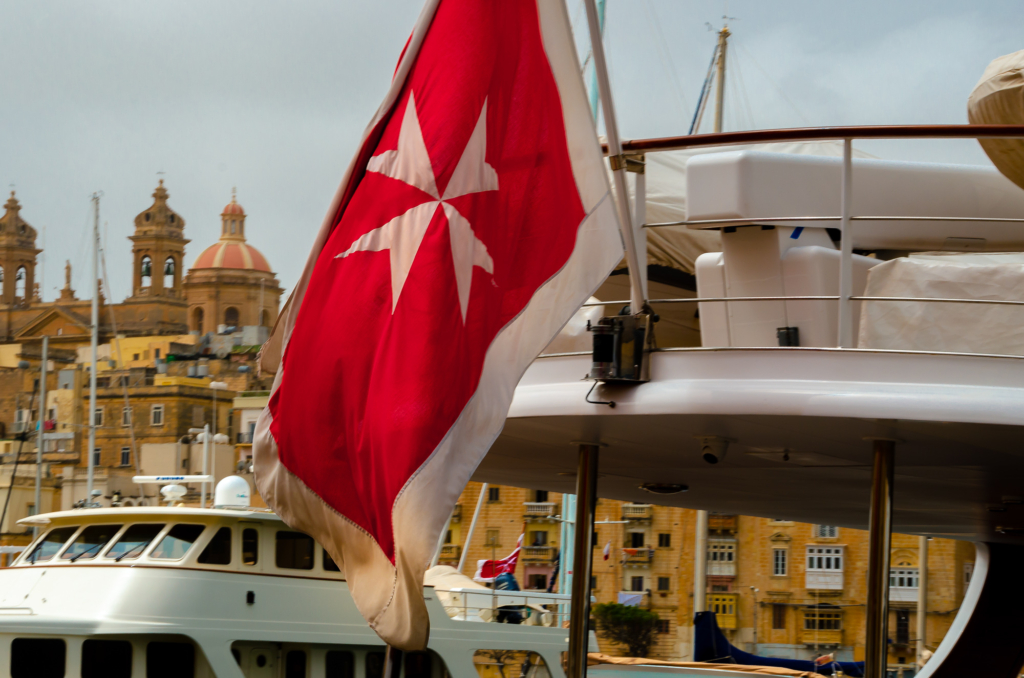
It has the points of four arrow heads meeting in the center. It’s a heraldic cross for the Knights Hospitaller / Order of St. John.
The eight points of the cross have been given a number of symbolic interpretations, such as representing the eight regions supplying troops to the order (Auvergne, Provence, France, Aragon, Castille and Portugal, Italy, Germany, and the British Isles). An alternative explanation is it represented the eight obligations of the Knights. Whatever the original inspiration, it’s a remarkable graphic design and I now know a lot more about the country it symbolizes!

